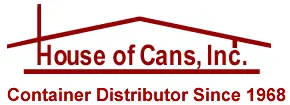LTL Shipment Information
Your shipment is being transported via freight truck, and we wanted you to be aware of your rights and responsibilities as the end recipient.
Once a shipment leaves our warehouse, we rely on the trucking company and the you as the receiver to ensure a smooth delivery. We ask you to do a very small amount of work to protect yourself, and us.
On arrival, inspect the shipment immediately for obvious signs of damage.
Any and all shortages and damages must be written on the Bill Of Lading (BOL) or Delivery Receipt (receipt). Should you determine that any items are damaged or missing, you MUST note the item, the discrepancy, and the condition before you sign it. Then call the freight company to report any problems.
You should open cartons and containers.
If there is the slightest doubt that the merchandise is damaged (concealed or not) it must be noted on the BOL or receipt, or the liability to prove that the delivering carrier did the damage becomes your responsibility.
The driver must wait until you have inspected the shipment to your satisfaction.
They cannot leave until the BOL or receipt is signed (regardless of how much in a hurry they are or how late they are). The carrier's driver should help you receive your shipment and answer your questions.
The BOL or receipt is the only documentation of the condition of a shipment when it arrives at your location, and without this document, we cannot hold others accountable for items damaged or missing.
Your signature on the delivering carrier's freight Bill Of Lading (BOL) constitutes acceptance of the merchandise as is and in good order.
If you do not inspect before signing you are, for all practical purposes, waiving the right to collect on a damage claim even if the damage is discovered later (known as concealed damage).
If there is discovered damage: if the box, pallet, or merchandise is visibly damaged, contact us immediately (within 3 days of delivery). Please also notify us of the situation as quickly as possible so we can follow-up on our end to assist with any required procedures.
If there is concealed damage:
Although we strongly recommend inspecting the shipment prior to signing the delivery receipt, some still do not do so. If the consignee or their representative sign for the shipment, and then at a later time discover that there is some damage not noticed at delivery (called "concealed damage"), then a claim will need to be filed by the consignee against the freight company.
Please note: If the consignee has signed for the shipment indicating there was no damage noted at time of receipt, the consignee would then have to take up their claim with the freight carrier if concealed damage becomes apparent after receipt. Many people order products in advance of need, and wait until it is needed to finally check the condition of the product (sometimes weeks or even months have passed); in these situations, it is the consignee's sole responsibility to contact the freight carrier and pursue a claim.
Additional points to consider:
- Whenever signing for freight, always write "SUBJECT TO INSPECTION".
- Whenever possible, inspect the freight before you sign.
- Note on the freight bill any obvious damage at the time of delivery (i.e. box corners crushed, tears, rips, slices, marks etc.); be specific.
- If you suspect internal damage, open immediately.
- Even if no damage is suspected, open the carton(s) within 24 hours and make a thorough inspection.
It is the responsibility of the person that signs for received items to inspect and note any and all problems before the delivery person leaves. Unless shipping by your requested carrier (collect) all shipments ship "FOB" (Freight On Board) - this term simply means that once the carrier picks up the material from the factory/supplier, the factory/supplier is no longer responsible for the material.
If you have someone signing the freight bill for you, for whatever reason, they are acting as your representative; you should inform them that they should check for missing or damaged items. If the freight is signed for without notating damaged or missing pieces, it is almost impossible to get the freight companies to take responsibility.
We cannot be held responsible for freight damage or missing pieces; we will help you deal with the freight company, but you must call the freight inspector and you must file the claim. Ultimately, it is the Freight Company's responsibility to deliver the shipment in good condition, and it is the consignee's responsibility to inspect and sign for the products and notate any missing or damaged pieces.



